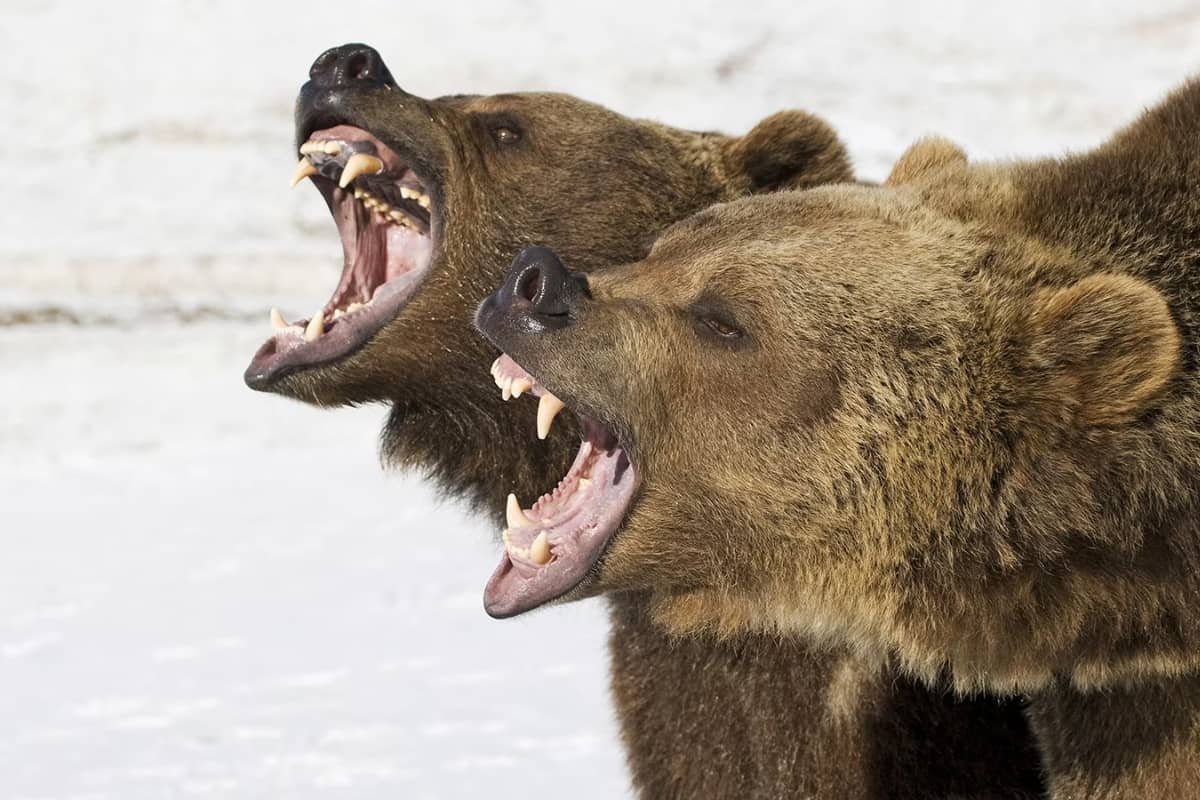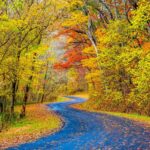Grand Teton National Park is one of the most breathtaking destinations in the United States, offering visitors stunning landscapes, diverse wildlife, and a sense of true wilderness. However, with this beauty comes the reality of sharing the park with some of North America’s most formidable wildlife, including grizzly bears. For tourists concerned about encountering these powerful animals, it’s crucial to be aware of specific areas in the park where grizzly bear activity is most common. This article highlights seven danger zones in Grand Teton National Park where visitors should exercise heightened caution to avoid bear encounters.
1. Signal Mountain Summit Road and Signal Mountain Trail
Signal Mountain is one of the most well-known spots in Grand Teton National Park, offering panoramic views of the surrounding landscape. However, it’s also a hotspot for grizzly bear activity. In recent years, the area has seen several bear-related incidents, including a serious attack on a visitor in 2024. The victim, who was exploring the area for wildlife photography, was surprised by a mother grizzly bear protecting her cub. Despite attempting to use bear spray, the visitor was severely injured, highlighting the unpredictable and dangerous nature of bear encounters in this area.
The National Park Service (NPS) has responded by closing Signal Mountain Summit Road and the associated trail to all public entry for the time being. However, when this area reopens, tourists should be particularly vigilant, keeping bear spray readily accessible and avoiding dense wooded areas where visibility is limited.
2. Cascade Canyon
Cascade Canyon is one of the most popular hiking destinations in Grand Teton National Park, known for its scenic beauty and access to the stunning Lake Solitude. Unfortunately, this popularity extends to the park’s grizzly bear population as well. Bears are frequently spotted in Cascade Canyon, especially during the late summer and early fall when berry season peaks.
The combination of dense vegetation, narrow trails, and abundant food sources makes Cascade Canyon a prime area for surprise encounters with grizzlies. Hikers in this area should make noise as they walk, travel in groups, and carry bear spray as a precaution. It’s also advisable to avoid hiking at dawn or dusk when bears are most active.
3. Two Ocean Lake Trail
Two Ocean Lake Trail is another area within Grand Teton National Park where grizzly bears are commonly seen. This trail passes through thick forests and around the lake, creating an ideal habitat for bears, particularly in late summer and early fall when they are foraging for food in preparation for winter hibernation.
Bears are often attracted to the lake due to the availability of water and food, making it a high-risk area for encounters. Visitors should stay on marked trails, make plenty of noise to alert bears to their presence, and always be prepared with bear spray. It’s also important to respect any temporary closures that may be in place due to bear activity.
4. Colter Bay Area
Located on the shores of Jackson Lake, the Colter Bay area is a popular destination for camping, boating, and hiking. However, it’s also a known bear habitat, particularly during late summer when bears are actively seeking out food sources near the water.
Campers in this area should adhere strictly to food storage regulations, keeping all attractants, including food, toiletries, and cooking equipment, in bear-proof containers or vehicles. Additionally, visitors should avoid cooking or eating in their tents, as the smell can attract bears. If a bear is sighted, it’s essential to give it plenty of space and never approach it, even for photographs.
5. Moran Bay
Moran Bay is another area in Grand Teton National Park where grizzly bears are frequently seen. This region serves as a corridor for bears moving between feeding grounds, making it a high-risk zone for encounters.
The thick forests and proximity to water sources in Moran Bay create an ideal environment for bears, especially during the fall when they are preparing for hibernation.
Hikers and campers in Moran Bay should take extra precautions, such as traveling in groups, carrying bear spray, and avoiding areas with limited visibility. If a bear is spotted, the best course of action is to back away slowly and leave the area. Running is not recommended, as it can trigger a predatory response in bears.
6. Berry Creek Area
Berry Creek is known for its remote location and dense vegetation, making it a prime habitat for grizzly bears. This area is less frequented by tourists, but those who venture into Berry Creek should be aware of the heightened risk of bear encounters. The dense forests make it difficult to see or hear bears approaching, increasing the likelihood of surprise encounters.
Visitors to Berry Creek should be particularly cautious, making noise as they walk and keeping bear spray easily accessible. It’s also advisable to avoid the area during times of day when bears are most active, such as early morning and late evening.
7. Paintbrush Canyon
Paintbrush Canyon, like Cascade Canyon, is a popular hiking destination in Grand Teton National Park. However, it is also a known bear habitat, particularly in late summer and early fall when bears are actively foraging for food(
The steep terrain and dense vegetation in Paintbrush Canyon make it an area where hikers need to be extra cautious.
Hikers should stay on marked trails, travel in groups, and carry bear spray. It’s also important to be aware of your surroundings, making noise as you hike to avoid surprising any bears that may be nearby. If you encounter a bear, it’s crucial to remain calm, back away slowly, and avoid direct eye contact(
Bear Safety Tips for Grand Teton National Park
While the danger zones listed above are areas where bear activity is particularly common, it’s important to remember that grizzly bears can be encountered anywhere in Grand Teton National Park. To minimize the risk of an encounter, visitors should follow these safety tips:
- Carry Bear Spray: Bear spray is a non-lethal deterrent that can stop aggressive bears in their tracks. Make sure you know how to use it and keep it easily accessible at all times(NPS Homepage).
- Make Noise: When hiking, especially in areas with limited visibility, make noise to alert bears to your presence. This can help prevent surprise encounters, which are a common trigger for bear attacks(NPS Homepage).
- Travel in Groups: Bears are less likely to approach larger groups of people. Whenever possible, hike with others and stay close together(NPS Homepage).
- Avoid Hiking at Dawn or Dusk: Bears are most active during the early morning and late evening hours. Avoid hiking during these times to reduce the risk of an encounter(Travel Experience Live).
- Store Food Properly: When camping, store all food, garbage, and other attractants in bear-proof containers or vehicles. Never leave food unattended, and do not keep any scented items in your tent(NPS Homepage).
- Stay on Marked Trails: Staying on designated trails reduces the likelihood of surprising a bear. It also helps protect the bear’s natural habitat from human intrusion(NPS Homepage).
Conclusion
Grand Teton National Park is a magnificent destination that offers a true wilderness experience. However, with this comes the responsibility to coexist safely with the park’s wildlife, including grizzly bears. By being aware of the danger zones outlined in this article and following the recommended safety tips, visitors can enjoy their time in the park while minimizing the risk of a bear encounter. Remember, the key to a safe and enjoyable visit is preparation, awareness, and respect for the natural environment.






